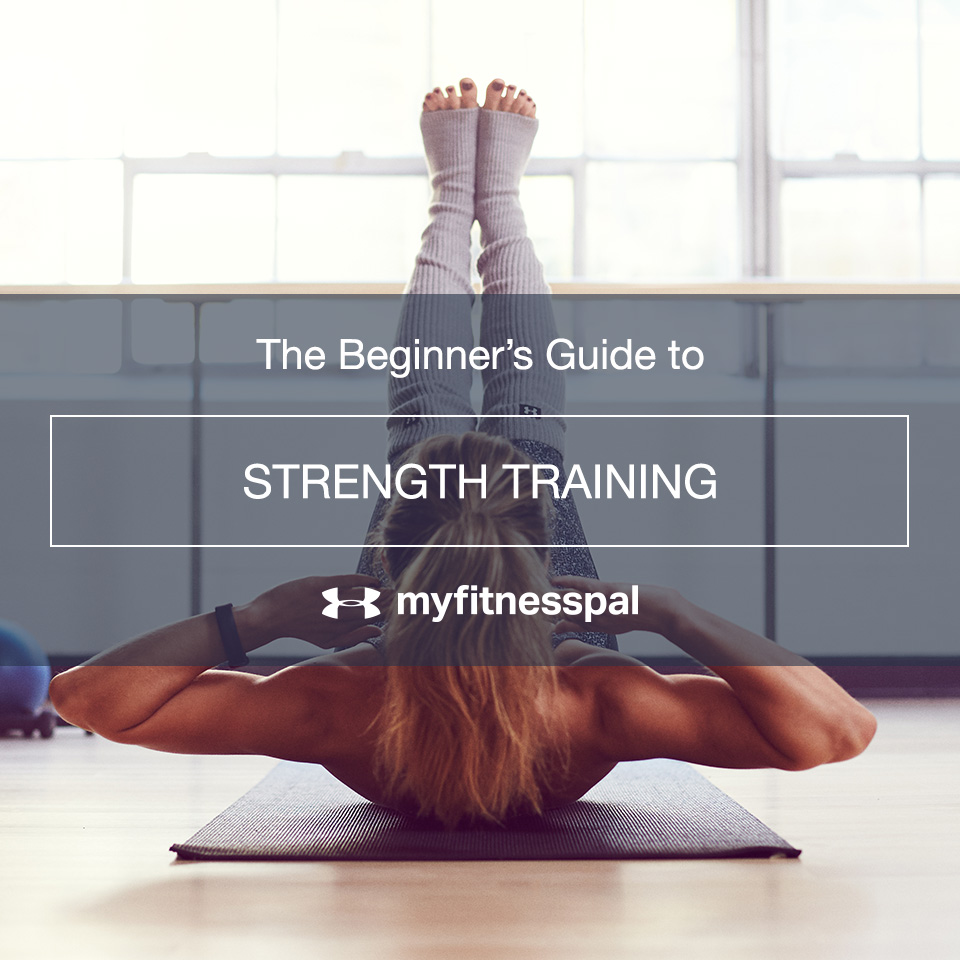
The Beginner’s Guide to Strength Training

Just about everyone would love to be able to run faster, jump higher and hit harder. With that said, most of us would also like to be able to climb a flight of stairs without getting winded, haul groceries without becoming fatigued and complete other daily activities with ease. Whether you’re looking to jump into the ring, sign up for a 5K or simply live a healthier life, strength training plays a big role in improving your ability to complete every one those things. The challenge is figuring out how to approach strength workouts, and finding the motivation to do so.
To get you started, we’ve rounded up some of the proven benefits of strength training, along with methods on how to to implement such a program.

There’s no shortage of evidence to back up the health-related benefits of strength and resistance training. It’s been shown to decrease the risk of heart attack and stroke, lower blood pressure and improve glucose metabolism and insulin sensitivity. Research that studied older adults found that this activity’s potential to increase strength and power thereby reduces the difficulty many seniors experience while performing daily tasks. It also encourages participation in other types of exercise.
Strength training also has a positive influence on bone density and health — in particular helping to prevent osteoporosis in aging adults. Although aerobic exercise is still cited as an important component of promoting overall health, resistance exercises play a particularly vital role in building and maintaining bone mineral content and density. So whether you’re looking to fortify your bones against injuries during exercise or simply build strength as you age, a regular resistance training regimen is paramount.
Setting aside the aforementioned benefits of strength training that will impress your doctor at your annual physical, most of us are also drawn to resistance training because we want to get stronger and look better. If it’s a svelte figure you’re gunning for, regular resistance training has been shown to improve body composition. It also assists in reducing belly fat and building lean mass. What’s more, studies have demonstrated that weight training improves performance in other types of physical activities, including walking endurance and running economy.
Interestingly, resistance training has even been cited in improving mental health. While more research is in the works, studies have shown that regular strength work can have a positive influence on reducing feelings associated with anxiety, depression and chronic fatigue. What’s more, there’s no denying the boost in self-esteem you get when you look and feel stronger.

When starting a strength training program, it is important to determine your overall goals. Are you looking to build muscle for show or for more practical purposes? This is the difference between bodybuilding and strength training. The latter is all about functional strength, while the former is more concerned with increasing the size of your muscles, often for aesthetic purposes.
While we all want to look good, functional strength is a priority for most of us. We want everyday tasks to feel easier, but we don’t want it to feel like we have to climb Mount Everest every time we show up at the gym.
Strength training workouts that are designed to build functional strength train your central nervous system to recruit muscles effectively through various movements. It’s all about strengthening the muscles, connective tissues and bones to handle a variety of moves, whether it’s lifting, pushing or pulling. While this type of program might not transform you into a mirror image of Arnold Schwarzenegger, it will allow you to execute a wide range of activities with greater ease.

While the concept of strength training isn’t foreign to most, the methods by which to do so often are. Indeed, there are a wide variety of ways you can arrive at the same level of functional strength, depending on the setting and equipment. One approach isn’t necessarily better than another — they simply offer different avenues to increased strength. The four main methods of strength training are: body-weight moves, free weights, resistance bands and machines.
Body-Weight Moves: As you might expect, body-weight exercises build strength by requiring you to do different moves that support the weight of your own body. Think: planks, push-ups and crunches. The beauty of these types of exercises is that they are supremely effective in achieving the goal of increasing strength without any equipment. If you hate going to the gym or simply find it more convenient to do your strength workouts at home, body-weight exercises are a great option.
Free Weights: Free weights include exercises that utilize dumbbells, such as bicep curls or tricep extensions. Like body-weight exercises, these allow for full range of motion to develop overall functional strength. Every gym has free weights, or you can purchase your own to train in the comfort of your living room.
Resistance Bands: Similar to free weights, elastic resistance tubing also allows for full range of motion. They are available in a variety of resistances to mimic increasing weight as well. Since resistance bands don’t rely on gravity the way free weights do, they offer you the opportunity to do a greater variety of functional exercises, including pushing and pulling on all planes of motion.
Machines: While you can certainly go out and purchase a fancy exercise machine for lifting, most people use weight machines when they are at the gym. Machines are generally easy to use (they often have diagrams that show you how to operate them) and help train proper form during lifting movements. They also isolate muscle groups if you’re looking to focus on specific areas. The downside is that the movements are often less functional, so although they build strength, that strength doesn’t always translate to other activities.

The American College of Sports Medicine recommends working the major muscle groups with resistance training exercises 2–3 times per week. Those muscle groups include: chest, arms, shoulders, abs, back and legs. ACSM suggests performing between 2–4 sets of 8–20 repetitions of each exercise, depending on your goals. In addition to taking rest between each set and exercise, you should also allow for 48 hours of recovery between sessions.
When determining how much weight to lift or how many reps and sets to do, consider your current fitness level. At the end of each exercise, you always want to feel as if you could do one more repetition. So while you should experience some fatigue, it shouldn’t be to the point of complete exhaustion.
As you build strength, it’s important to keep the in mind the principle of progression, which the ACSM defines as: “The act of moving forward or advancing toward a specific goal over time until the target goal has been achieved.”
This means that a properly designed program will change in load, volume, rest and frequency so that you build strength over time. If you progress too quickly, you’re likely to get sidelined by an injury. Conversely, if the program doesn’t continue to challenge you along the way, strength gains will plateau. The idea is to up the ante methodically over weeks, months and years to get you to that desired level of health, endurance and strength.
Since this can be tricky to determine on your own, recruiting the help of a trainer is invaluable for those new to strength training. Even if you only meet with the trainer a couple of times, he or she can help you design a program that makes sense for your fitness level and goals. A trainer will also help ensure you’re doing exercises safely and effectively, as well as address any health concerns or past injury history. Over time, you may gain a greater sense for what and how much you should be doing when it comes to strength work, but in the beginning, an expert can put you on the right track.
The post The Beginner’s Guide to Strength Training appeared first on Hello Healthy.
(c) Hello Healthy – Read entire story here.


